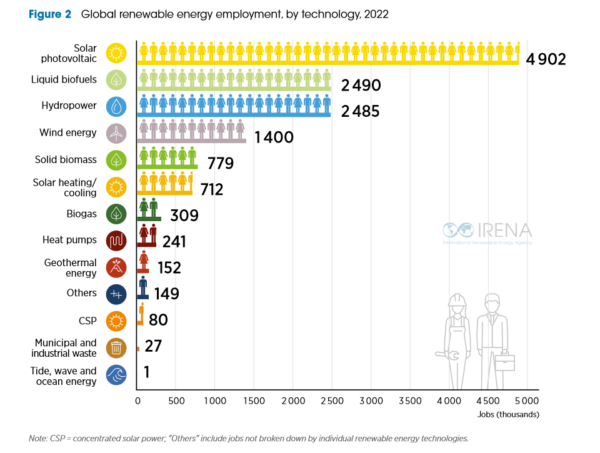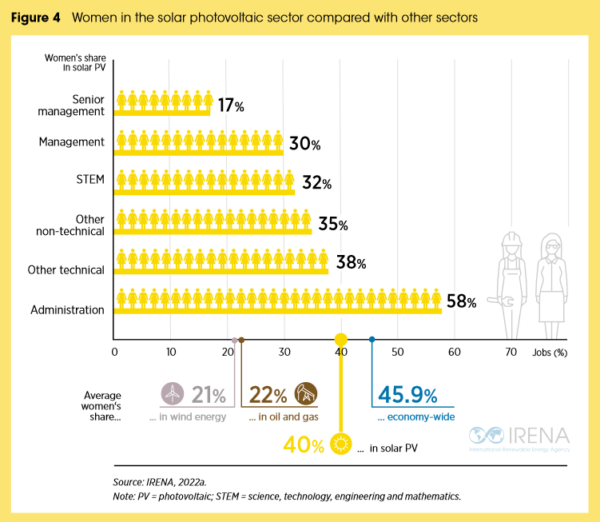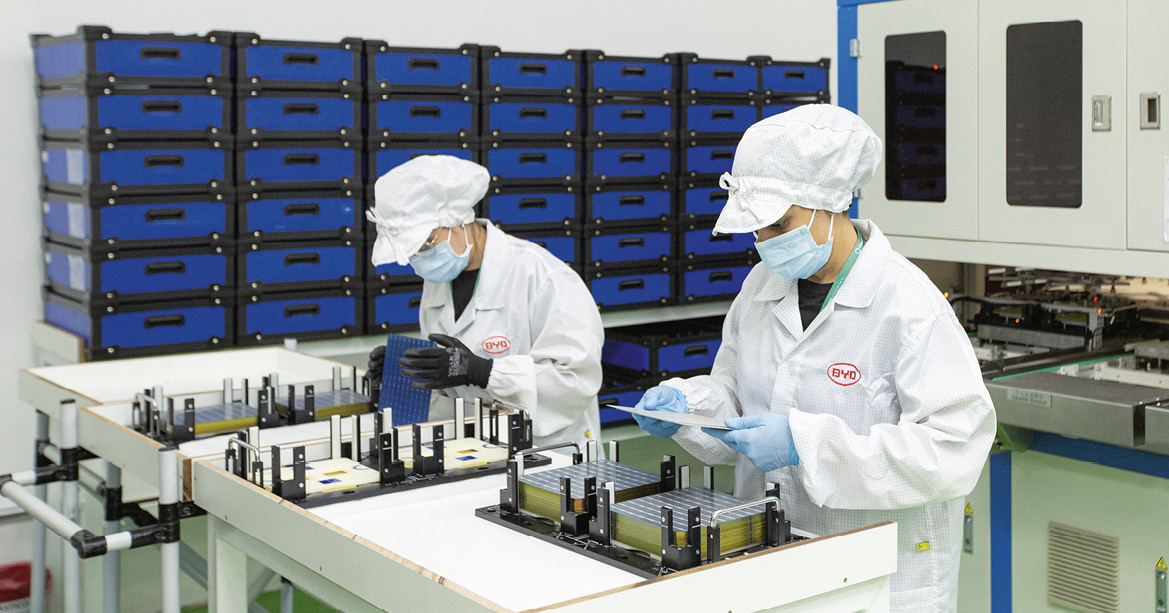Global solar PV employment sat at 4.9 million in 2022, up from 4.3 million in 2021, according to the recently published Renewable Energy and Jobs Annual Review 2023 by the International Renewable Energy Agency (IRENA).
Among all renewable energy technologies – including hydro, wind and biogas – solar PV was the “fastest-growing” sector and accounted for over one-third of the total renewable energy workforce (13.7 million), the report claimed.

IRENA.
China, home to a majority of the world’s PV manufacturing sector, recorded the most workers with 2.76 million. The country also retained a “commanding position” across the supply chain, from ingots and wafers to cells and modules, IRENA said in the report.
India employed the second largest number of workers, with 281,400 staffers, with on-grid solar estimated to have generated 201,400 jobs and another 80,600 in off-grid settings, the report stated. The US comprised the third-largest solar PV workforce in 2022 with 264,000 employees.
“Increasing solar PV installations in Brazil boosted employment in this industry to 241,000 jobs. Japan added less capacity in 2021 than the previous year. IRENA estimates its workforce at 127,000,” IRENA said in the report.
Popular content
Europe accounted for roughly 11% of the solar PV industry’s total workforce with 540,000 workers in 2022. The report stated that the European Union experienced a “surge” in PV imports in the first half of 2022 due to the Ukraine crisis and subsequent efforts to reduce reliance on oil and gas imports. “However, installation rates trailed due to shortages of inverters and skilled labor, which subsequently slowed imports during the second half of the year,” according to the report.
Female representation in the solar industry was higher than any other renewable energy in 2022, with 40% of the workforce being female – twice as much as in wind, oil and gas sectors, the report claimed. However, women’s participation still falls “somewhat short” of the share of women employed in the overall economy.
Women’s employment in the industry was “uneven”, with females mostly hired for administrative positions (58%) followed by science, technology, engineering, and mathematics (38%) and non-STEM technical positions (35%). Women accounted for 30% of managerial jobs and only 17% of the total senior management.

IRENA.
More “effective actions” – such as greater awareness, further national policies and better workplace practices – are needed to ease women’s entry into the industry and improve their career prospects, the report stressed.
This content is protected by copyright and may not be reused. If you want to cooperate with us and would like to reuse some of our content, please contact: editors@pv-magazine.com.


3 comments
By submitting this form you agree to pv magazine using your data for the purposes of publishing your comment.
Your personal data will only be disclosed or otherwise transmitted to third parties for the purposes of spam filtering or if this is necessary for technical maintenance of the website. Any other transfer to third parties will not take place unless this is justified on the basis of applicable data protection regulations or if pv magazine is legally obliged to do so.
You may revoke this consent at any time with effect for the future, in which case your personal data will be deleted immediately. Otherwise, your data will be deleted if pv magazine has processed your request or the purpose of data storage is fulfilled.
Further information on data privacy can be found in our Data Protection Policy.